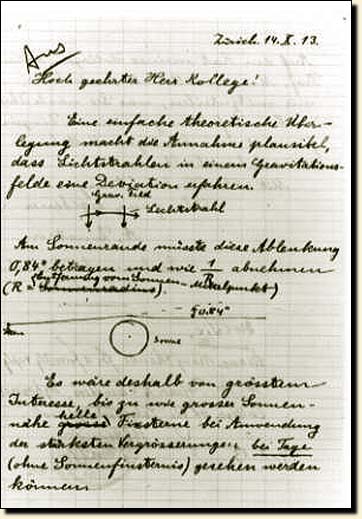
When Einstein proposed his field equations he believed they were far too complicated to allow explicit solutions to be found. Somewhat surprisingly, he was proved wrong within a year of his paper appearing in print. The first solution to be found, and also the most famous one is the Schwarzschild solution which describes a static, spherically symmetric vacuum spacetime. From this solution one can derive what are known as the four `classic tests' of the theory. These are:
These have now all been checked to an accuracy better than 1%. In fact to date, Einstein's theory has passed all experimental tests which have been proposed with flying colours.
| That light is deflected as it passes by a massive object (left) was first verified during a solar eclipse in 1919. This test of his theoretical prediction (right) made Einstein an international celebrity. |  |
If we take the idea of gravitational light bending to the extreme we can see how black holes can arise in a curved spacetime. We can imagine an object that curves spacetime so much that it can force light rays to travel in circles, and so stop any information escaping from some enclosed region.
|
The gravitational deflection of light can sometimes lead to multiple images of distant quasars being observed. This is known as `gravitational lensing'. The image to the right shows the famous `Einstein cross', an instance where four images of the same quasar are seen. |
 |
One of the most remarkable predictions of General Relativity is the existence of gravitational waves. Although such waves have not yet been observed directly, we see indirect evidence for their existence in the Hulse-Taylor binary pulsar and we believe that we are on the verge of detecting them directly with a new generation of sensitive detectors.